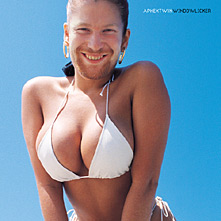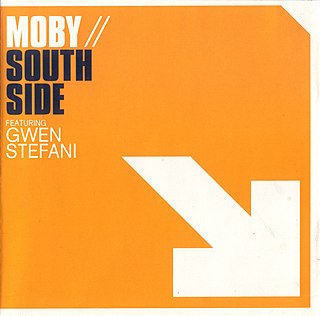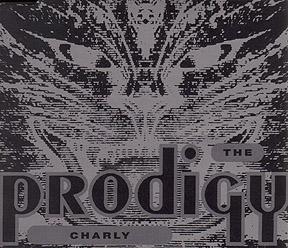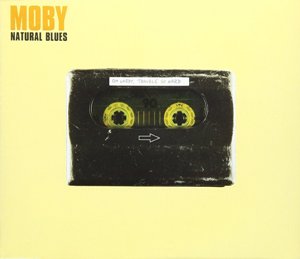
"Windowlicker" is a song by British electronic musician and producer Aphex Twin. It was released on 22 March 1999 through Warp Records. The artwork for the single was created by Chris Cunningham, with additional work by The Designers Republic. Cunningham also directed the song's music video, which was nominated for the Brit Award for Best British Video.

Play is the fifth studio album by American electronic musician Moby. It was released on May 17, 1999, through Mute Records internationally and V2 Records in North America. Recording of the album began in mid-1997, following the release of Moby's fourth album, Animal Rights (1996), which deviated from his electronica style; Moby's goal for Play was to return to electronica, blending downtempo with blues and roots music samples. Originally intended to be his final record, the album was recorded at Moby's home studio in Manhattan.

"South Side" is a song written and recorded by American electronica musician Moby. It was released to radio on October 10, 2000, as the seventh single from his fifth studio album, Play. Initially recorded with No Doubt frontwoman Gwen Stefani, production problems forced Moby to leave Stefani's vocals off the mix of the song included on Play; Stefani's vocals were then restored for the song's single release. The drums are sampled from "What's Up Front That Counts" by the Counts.

"Charly" is the debut single released by the British electronic act the Prodigy, later included on their debut album, Experience (1992), although the version featured on the album is the significantly different "Trip into Drum & Bass" remix.
Rhythm King Records Ltd was a British independent record label, founded in the mid-1980s by Martin Heath, Adele Nozedar, DJ Jay Strongman and James Horrocks. It was based in Chiswick, London.

"Can I Kick It?" is a song by American hip hop group A Tribe Called Quest, released in October 1990 as the third single from their debut album, People's Instinctive Travels and the Paths of Rhythm (1990). The song, which has a call and response chorus, was recorded in 1989, when the group members were aged 18-19.

"Unbelievable" is a song written and recorded by British band EMF, originally appearing on their debut album, Schubert Dip (1991). It was released as a single in the UK in October 1990 by Parlophone, peaking at number three on the UK Singles Chart on 1 December 1990. It was the 30th-best-selling single of 1990 in the UK, and a top 10 hit also in Belgium, Germany, Ireland, the Netherlands, Norway, Spain and Sweden. In the United States, "Unbelievable" hit number one on the Billboard Hot 100 and Cash Box Top 100 in 1991. The song was produced by Ralph Jezzard, and contains samples of US comedian Andrew Dice Clay and a Black Panther Party member shouting "What the fuck?" Its music video was directed by Josh Taft.

"He's on the Phone" is a song by British pop group Saint Etienne in collaboration with French singer-songwriter Étienne Daho, released in October 1995 by Heavenly and MCA as a single from their third compilation album, Too Young to Die (1995). A fast-paced dance track, it is one of Saint Etienne's biggest hits, reaching number 11 on the UK Singles Chart, number 31 in Iceland, number 41 in Sweden and number 33 on the US Billboard Dance Club Songs chart. The lyrics tell of an "academia girl" trying to escape from a relationship with a married man: He's on the phone / And she wants to go home, / Shoes in hand, / Don't make a sound, / It's time to go. At the centre of the track is a spoken-word section by Daho.

"Natural Blues" is a song by American electronic musician Moby. It was released on March 6, 2000, as the fifth single from his fifth studio album, Play (1999). The song is built around vocals sampled from "Trouble So Hard" by American folk singer Vera Hall (1937). "Natural Blues" was one of several songs on Play produced by Moby based on samples obtained from albums of American folk music originally compiled by field collector Alan Lomax. In the United Kingdom, "Natural Blues" peaked at number 11 on the UK Singles Chart. In Iceland, it peaked at number one.

"Why Does My Heart Feel So Bad?" is a song by American electronica musician Moby. It was released on October 11, 1999, as the fourth single from his fifth studio album Play. It became a hit in several regions, including German-speaking Europe and the United Kingdom.

"Into the Blue" is a song by American electronica musician Moby, released on June 19, 1995 by Mute Records, as the fourth single from his third studio album, Everything Is Wrong (1995). American musician Mimi Goese co-wrote the lyrics with Moby and provided the vocals. The song is slow and melancholy, a stark contrast to the first four singles from the album.

"Feeling So Real" is a song by American electronica musician Moby, released on October 1994 by Mute and Elektra, as the second single from the musician's third studio album, Everything Is Wrong (1995). The song, both written and produced by Moby, features the phrases "sound system rocking my....." and "set it up DJ!" spoken by Kochie Banton, who also appears in Moby's following single, "Everytime You Touch Me". The guest vocalist for the song is Rozz Morehead. It peaked at number 30 on the UK Singles Chart, number nine on the US Billboard Dance Club Play chart, and number one on the Finnish Singles Chart. Julie Hermelin directed the song's accompanying music video.

"Honey" is a song by American electronic musician Moby. It was released as the lead single from his fifth studio album Play on August 24, 1998. The song samples the 1960 recording "Sometimes" by American blues singer Bessie Jones. Moby first heard "Sometimes" on a box set collection of folk music compiled by Alan Lomax, and subsequently composed "Honey" around vocal samples from the Jones song.

"Bodyrock" is a song by American electronica musician Moby. It was released as the third single from his fifth studio album Play on July 12, 1999. Heavily inspired by hip hop music, the song incorporates vocal samples from "Love Rap" by Spoonie Gee and the Treacherous Three. The single peaked at number 38 on the UK Singles Chart.

"Next Is the E" is a song by American electronica musician Moby, released in October 1992 by Instinct and Equator as the third single from his self-titled debut album (1992).

"Move (You Make Me Feel So Good)" is a song by American electronic musician Moby, with a chorus sampling from Loleatta Holloway's 1980 song "Love Sensation". It was first released as the title track on Moby's extended play Move, which was issued on August 31, 1993, as his first release on Mute Records in the United Kingdom and on Elektra Records in the United States. It hit number one on the US Billboard Hot Dance Music/Club Play chart and number 21 on the UK Singles Chart.

"Hymn" is a song by American electronica musician Moby. It was released on May 1994 by Mute Records as the first single from the musician's third studio album, Everything Is Wrong (1995). The single version, which was radically remixed from the album original and retitled "Hymn ", peaked at number 31 on the UK Singles Chart and number three in Finland. A 33-minute ambient remix was also released, titled as "Hymn.Alt.Quiet.Version". The accompanying music video for "Hymn" was directed by English director Walter Stern, featuring Moby performing with silver bodypaint.

"Absolutely Fabulous" is a song by English synth-pop duo Pet Shop Boys, released by Parlophone and Spaghetti Records as a single for 1994's Comic Relief under the artist name "Absolutely Fabulous"; it is based on the BBC sitcom of the same name created by Jennifer Saunders and features sound bites taken from the first series of the show. The single peaked at number six on the UK Singles Chart and number seven on the US Billboard Hot Dance Club Play chart. It was more successful in Oceania, debuting and peaking at number two in both Australia and New Zealand; in the former country, it is the band's highest-charting single, and in both, it was their last top-10 entry.

"Falling" is a song by American dream pop singer Julee Cruise. It is the lead single and second track from her debut studio album, Floating into the Night (1989). Featuring music composed by Angelo Badalamenti and lyrics written by David Lynch, an instrumental version of "Falling" was used as the theme song for the ABC television series Twin Peaks and its Showtime revival.

"Playing with Knives" is a song by British electronic dance music group Bizarre Inc. It was their second single released through Vinyl Solution, as well as their second single to be written and produced as a trio. It is also the first single from their debut full-length album, Energique (1992). The song originally reached number 43 in the UK Singles Chart in March 1991. It was re-released later the same year and peaked at number four in the UK charts. In 1999, the song was released for a third time, charting at a peak of number 30.


















